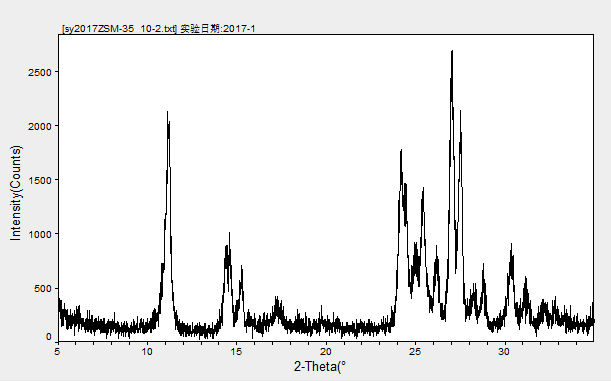I、Product introduction
ZSM-35 molecular sieve has the advantages of excellent thermal stability, hydrothermal stability, appropriate Aperture and acidity adjustment, and has excellent selectivity and stability in olefin isomerization reaction, so it has good practical application prospects.
ZSM-35 molecular sieves was synthesized firstly by Plank in 1977, which belongs to the FER structure, with Ten-membered channel (0.42 * 0.54 nm) parallel to the 001 surface and Eight-membered ring channel (0.35 * 0.48 nm) parallel to the 010 surface, with the channel cross piece forming 0.6 to 0.7 nm ball cage, owing excellent adsorption performance and good shape-selective catalytic properties, good thermal stability and hydrothermal stability, adjustable acidity. And it is a kind of new catalytic material that has great distinguishing feature. It is widely applied in isomerization, aggregation, aromatization and cracking process. The smaller pore size of zsm-35 molecular sieve inhibits the polymerization of olefin, and it is the most excellent catalyst for the isomerization of n-butylene skeleton. The one-way yield of isobutylene can reach up to 41%, and the catalyst’s service life is longer than 360h.
II、Typical indicators
Analytical item
Unit
Analytical result
Analytical method
Appearance
white powder
Silica-alumina ratio
XRF
Relative crystallinity
≥90
X-ray diffractometer
Total specific surface area
㎡/g
≥570
N2 Adsorption
Aperture
N2 Adsorption
Pore volume
g/cm3
≥0.278
N2 Adsorption
Loss on ignition
wt%
≤5
Gravimetric Analysis
25-200
%
nm
0.6
